
Meet Zoom AI Companion, your new AI assistant!
Boost productivity and team collaboration with Zoom AI Companion, available at no additional cost with eligible paid Zoom plans.
Updated on September 18, 2025
Published on September 18, 2025


When Skype made its last call in May 2025, it was the end of an era for companies who have been using it for videoconferencing for the past two decades. If you’re searching for the best Skype alternatives, our roundup covers nine of the best video conferencing and voice calling solutions of 2025.
You’ll learn how to pick your new favorite Skype alternative with nine options to review, and how to completely upscale your communication tech stack.
|
Software |
Best for |
Key features |
Starting pricing |
|
Zoom Workplace |
Video meetings & all-in-one collaboration |
|
|
|
Microsoft Teams |
Microsoft ecosystem users |
|
|
|
Google Meet |
Fast browser-based meetings |
|
|
|
RingCentral MVP |
Quick internal team meetings and check-ins |
|
$30/user/month, billed monthly |
|
Webex |
Strict security needs |
|
|
|
Slack |
Quick team huddles |
|
|
|
Viber |
International messaging and calls |
|
|
|
Discord |
Casual team communication with voice/video rooms |
|
|
|
GoTo Meeting |
Basic video conferencing on a budget |
|
|
*Pricing is current as of September 2025. Please contact specific companies for their up-to-date pricing and feature information.
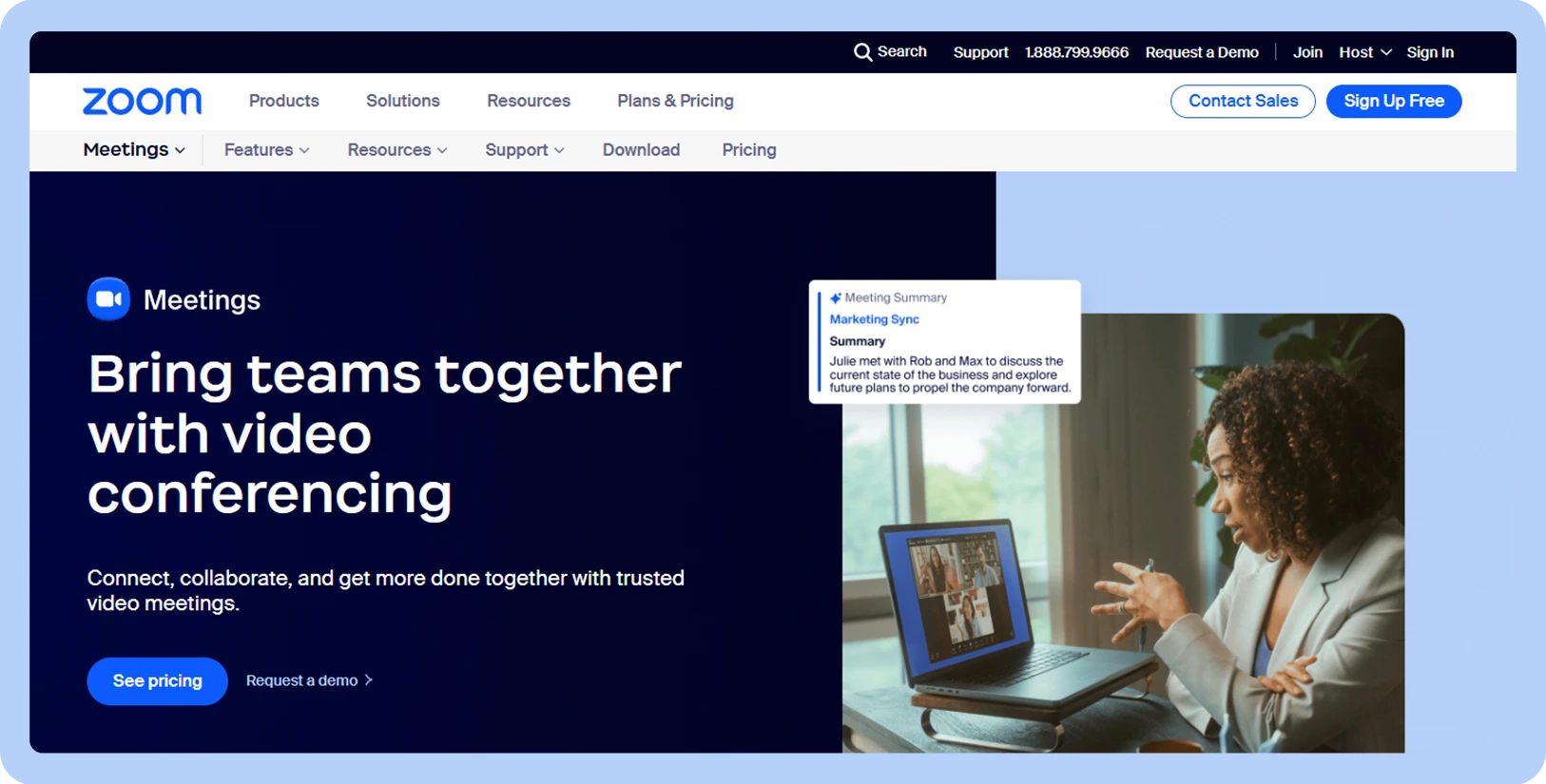

Video meetings & all-in-one collaboration
Screen sharing flexibility
Easy to collaborate
Meets numerous compliance standards
AI Companion capabilities included at no additional cost for eligible paid plans
Built-in AI noise cancellation
40-minute time limit for free accounts
Zoom Team Chat
Up to 100 interactive participants in a meeting
Live transcripts and captions
Gallery view (multiple speakers)
Breakout rooms
AI Companion for meeting summaries, smart recordings
Continuous meeting chat
Polls and Q&A
High-quality video and audio
Enterprise-grade security
Meeting recording
Screen sharing
Whiteboard collaboration
Waiting rooms and host controls
Calendar integration
Zoom Phone / business-grade calling
Free plan
Paid plans start at $13.32/month
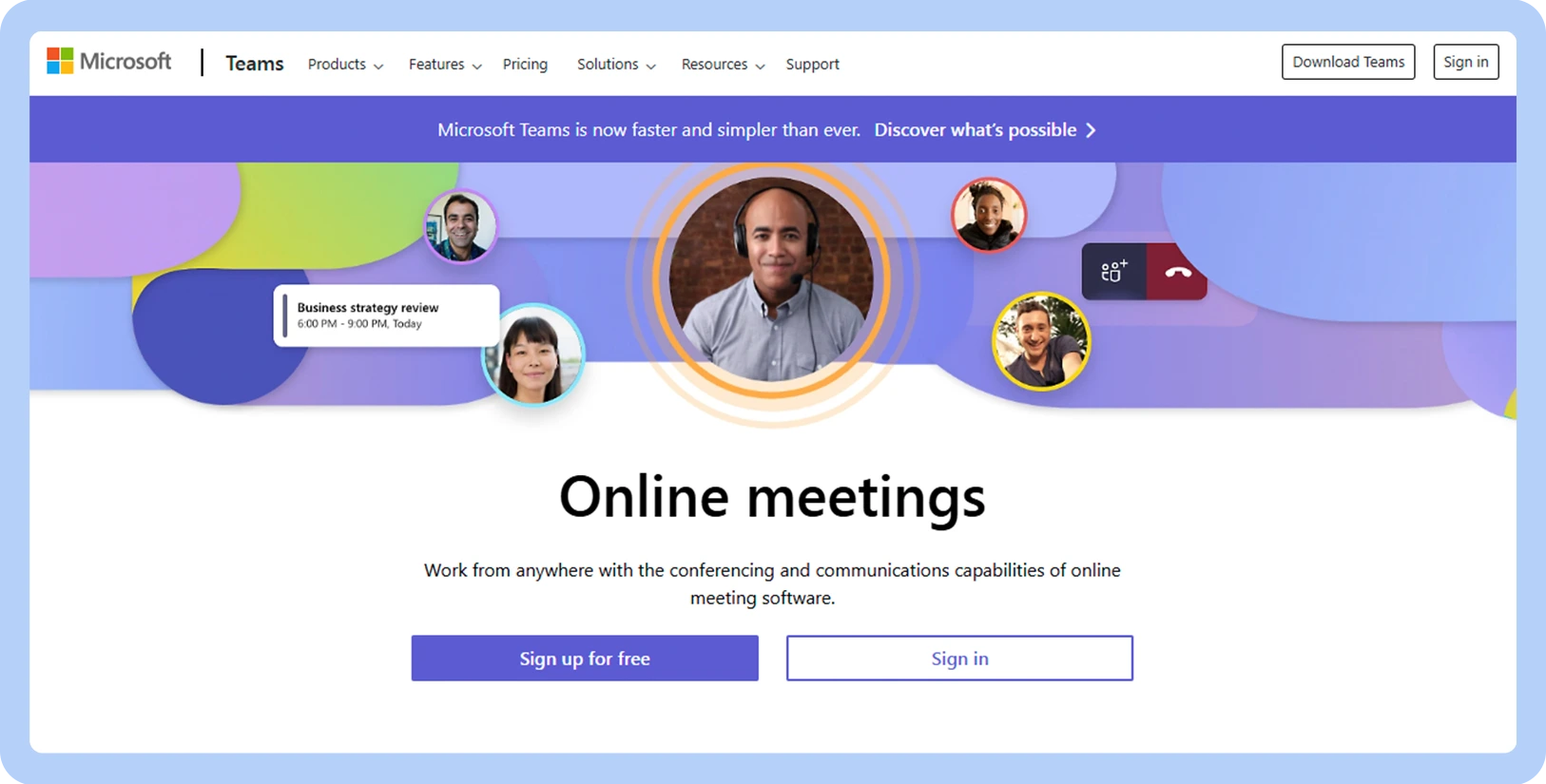

Microsoft ecosystem users
Easy access to Microsoft tools
Great scalability
Enterprise-grade security
Free plan only covers basic functions, requiring a more expensive Premium account for additional features
Steeper learning curve
Additional cost for Microsoft 365 Copilot
Video meetings up to 60 minutes on the free version
1:1 calls with no time limit
Free plan
Paid plans start at $4/month for Team Essentials
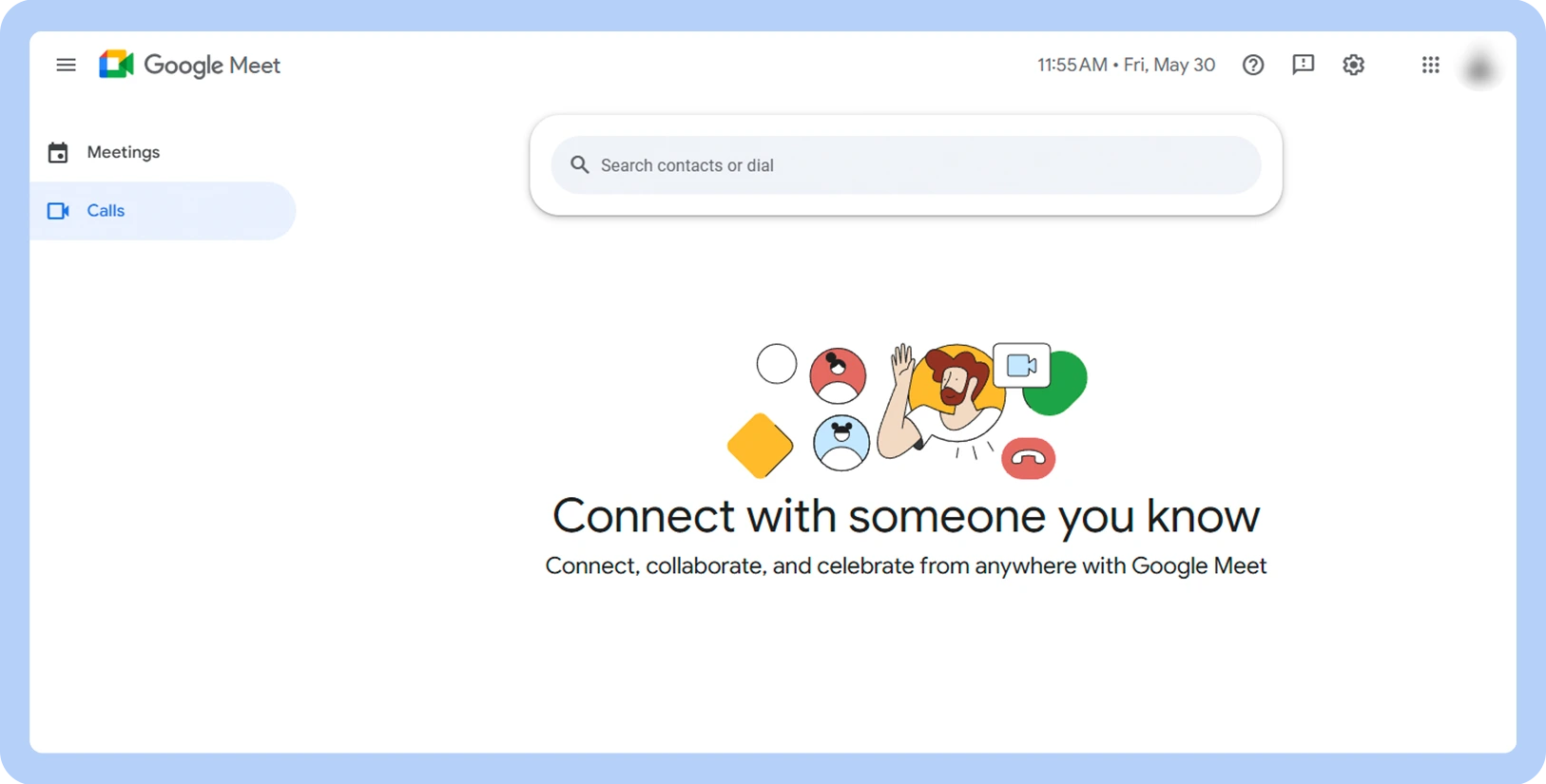

Fast browser-based meetings
Easy integration with other Google tools
User-friendly design
Built-in noise cancellation features
Restrictions on screen sharing
Heavier hardware resource lift
No desktop app available
High-quality video and audio
Live captions
Polls and Q&A
Attendance tracking
Free
Paid plans start at $6/month for Business Starter
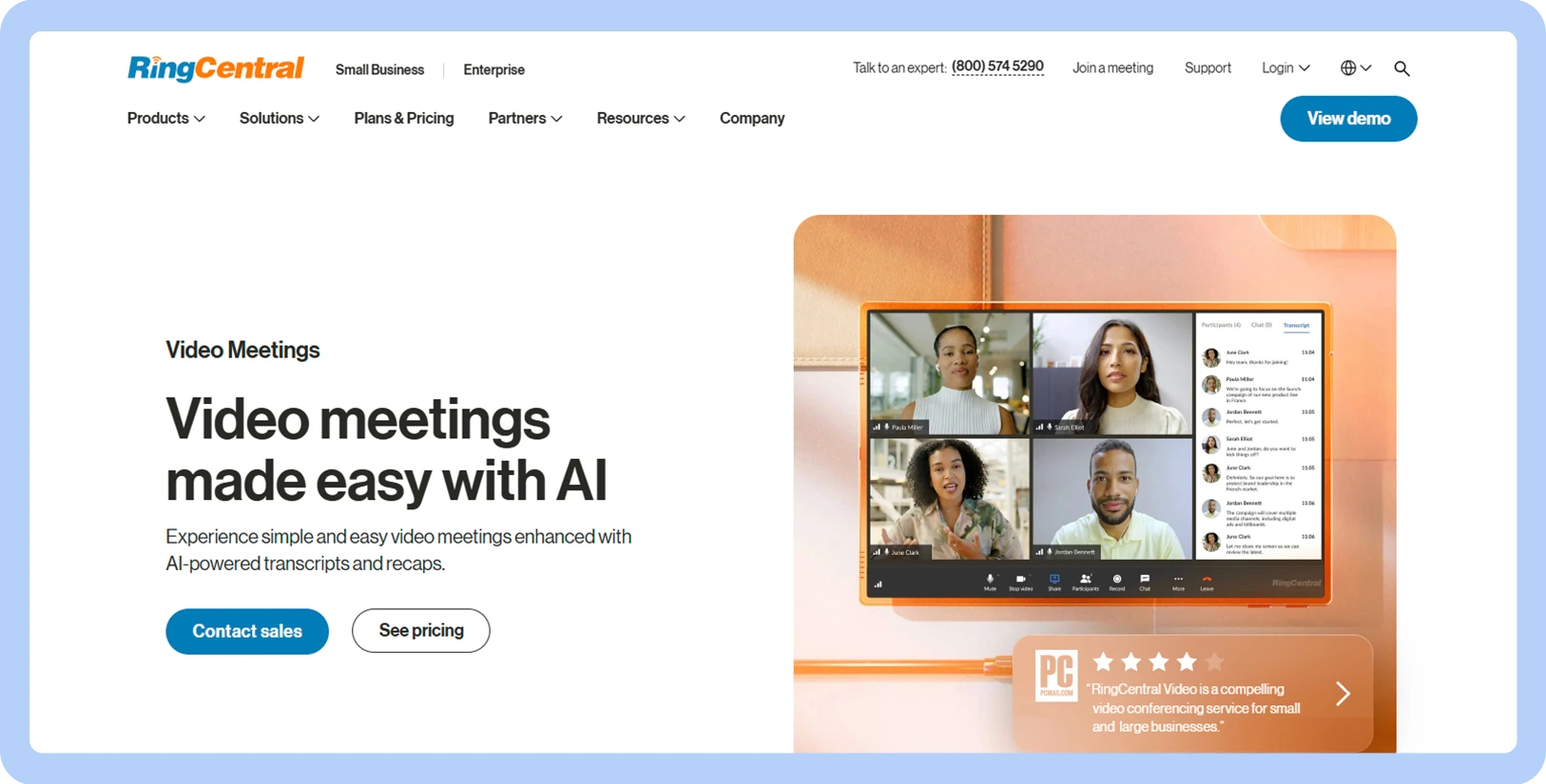

Phone-first companies
Low-cost international calling
Designed to accommodate teams of any size
End-to-end encryption and compliance measures
Can be expensive, especially for larger businesses
Limited texting features
International unlimited calling abilities
Unlimited team chat, file storage, and task management
Business-grade phone calling
Paid plans start at $20/month when paid annually
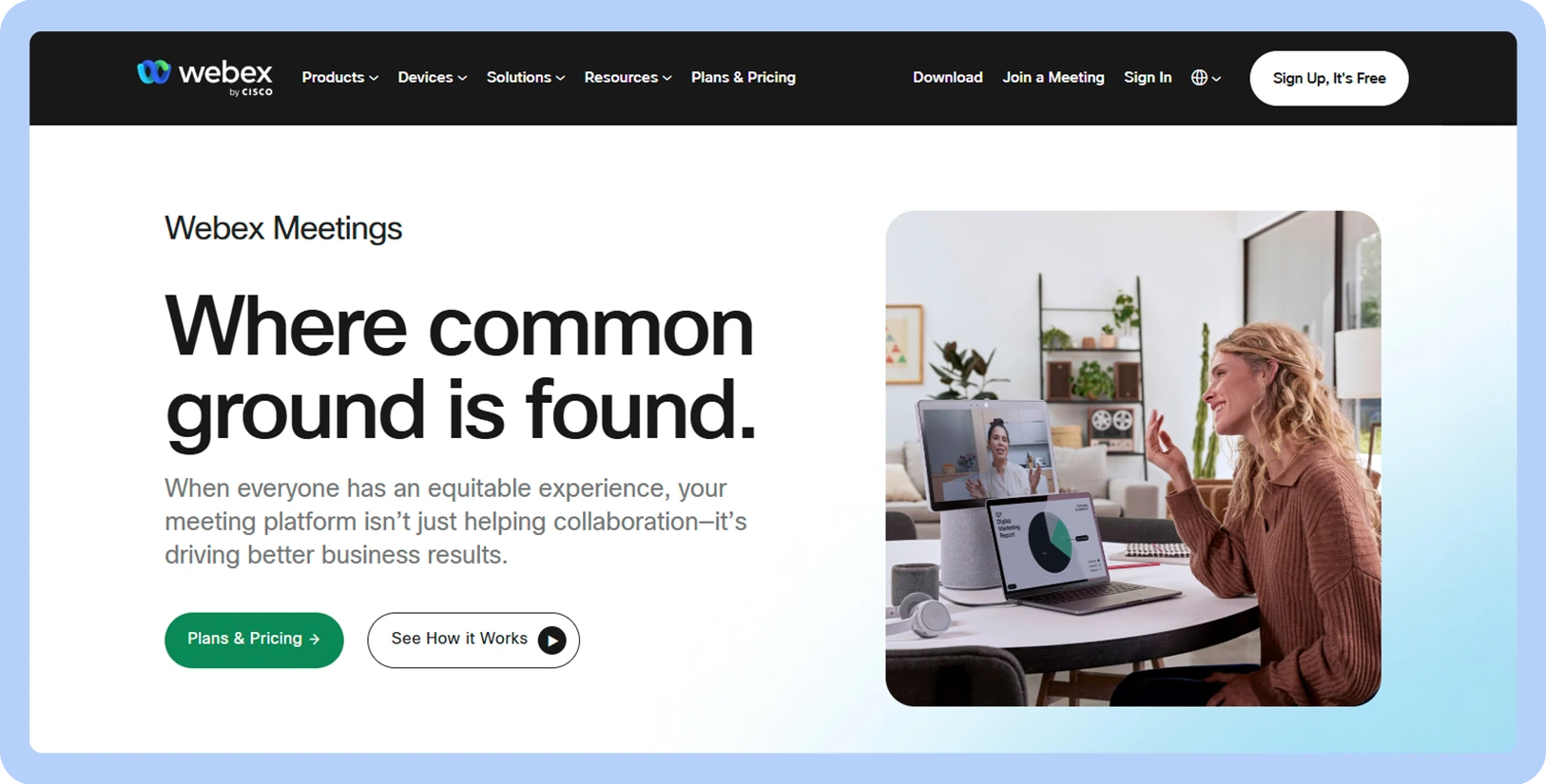

Strict security needs
Integration features
Strong security features like encryption and industry compliance
Limited cloud storage
International voice calls included for an additional fee
Paid tiers include AI assistant, live polling, Q&A
Unlimited meetings with 100 attendants for free plan
Free
Paid plans start at $12/month for Webex Meet
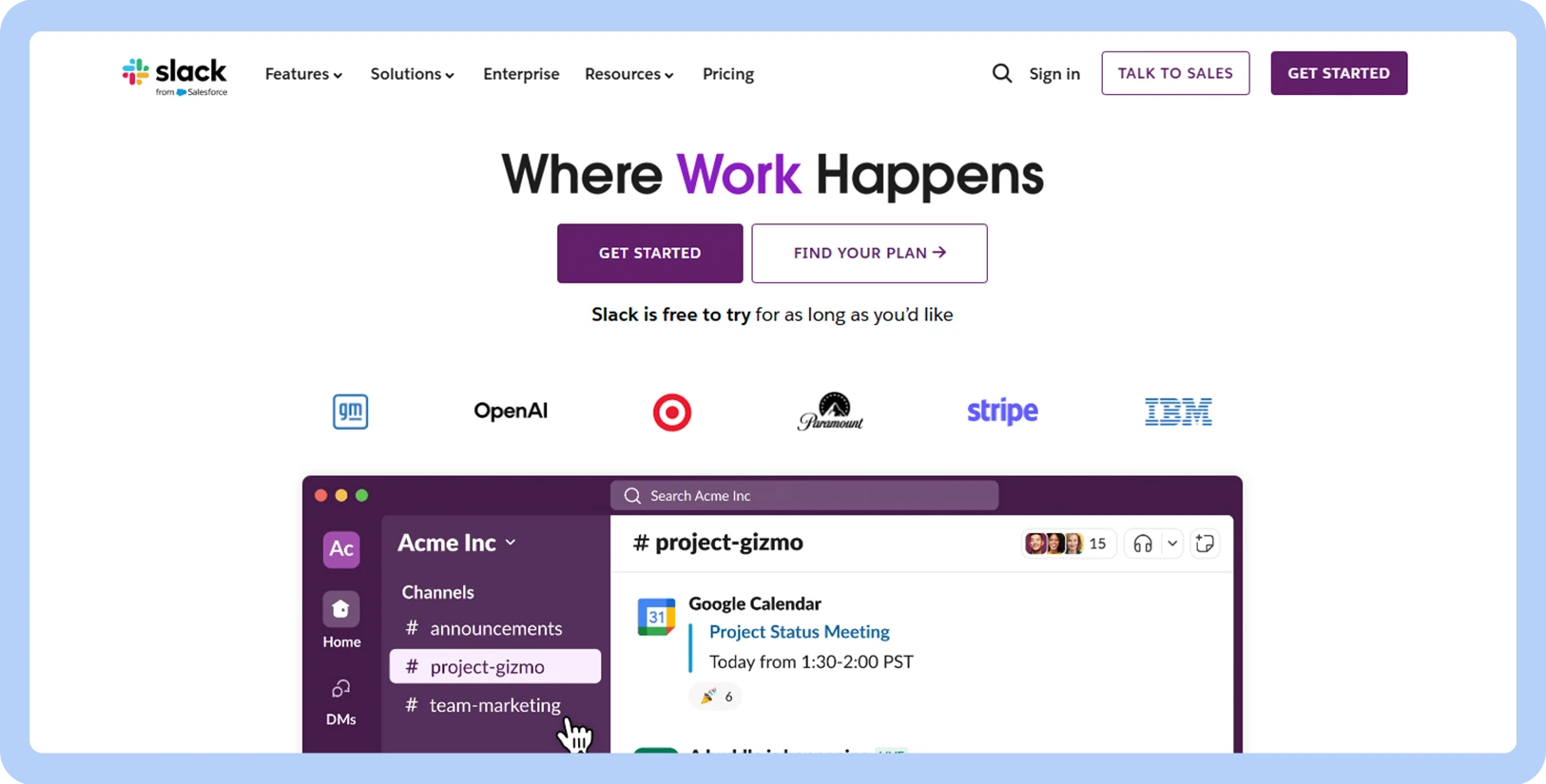

Real-time chatting
Integration and automation with third-party applications
User-friendly and customizable interface
Affordable for smaller teams
Security and privacy risks
Audio and video quality not especially robust
Better real-time collaboration
In-app calling
Free
Paid plans start at $8.75/month
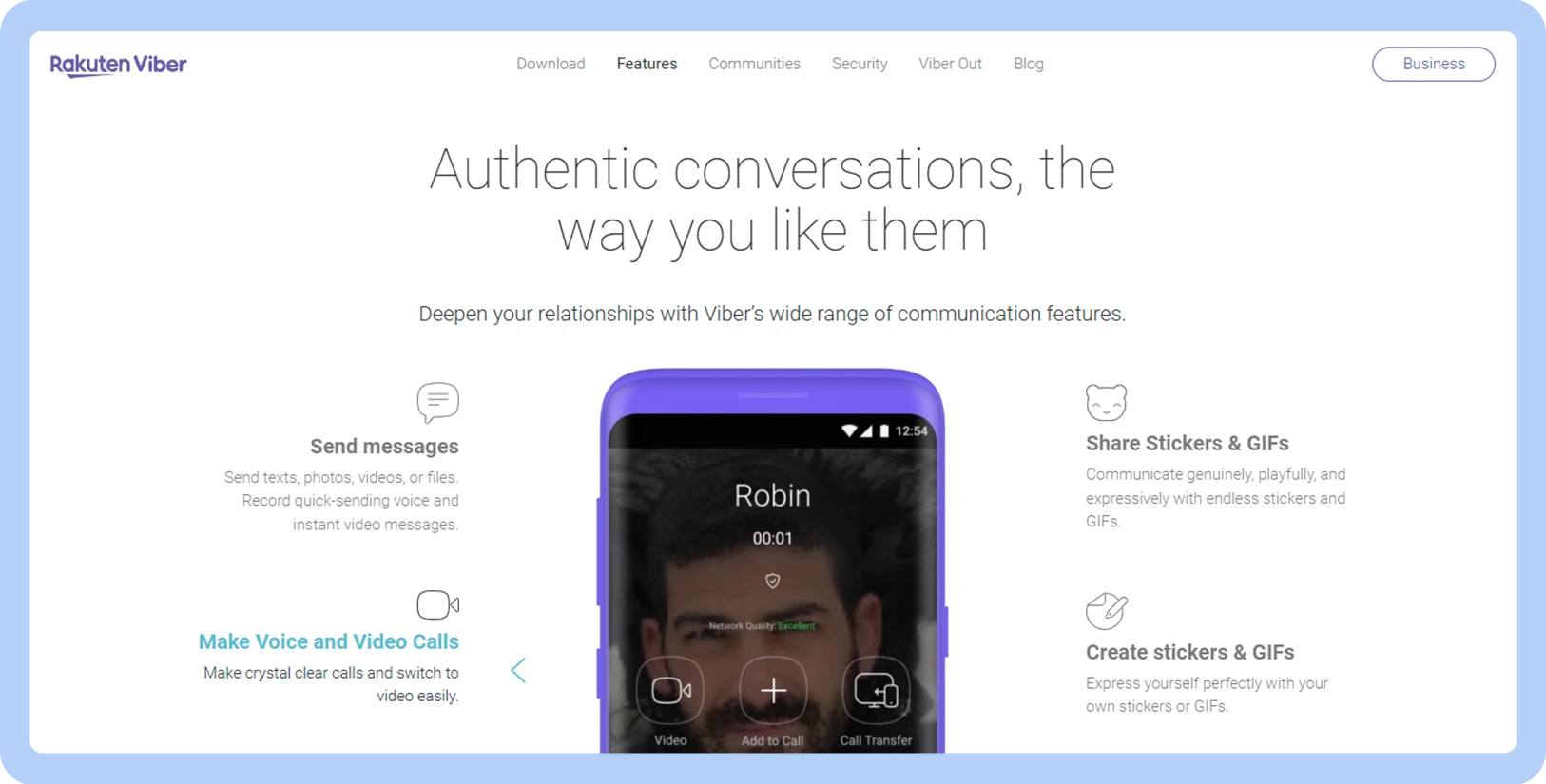

International messaging and calls
Flexible free plan
Group chat of up to 250 people
Easy to use, customizable interface
Ads on free plan
Have to provide a phone number to set up an account
Group chat
File sharing for all files
Audio/video calls for up to 40 people
Free
Paid plans start at $1.99/month for Viber Plus


Casual team communication
Affordable
Ad-free
Community building
Calls are limited to 25 participants
Privacy concerns
No built-in call recording
Unlimited meeting length
Breakout rooms
Server bots for automated control
Free
Paid plans start at $5/month for Nitro
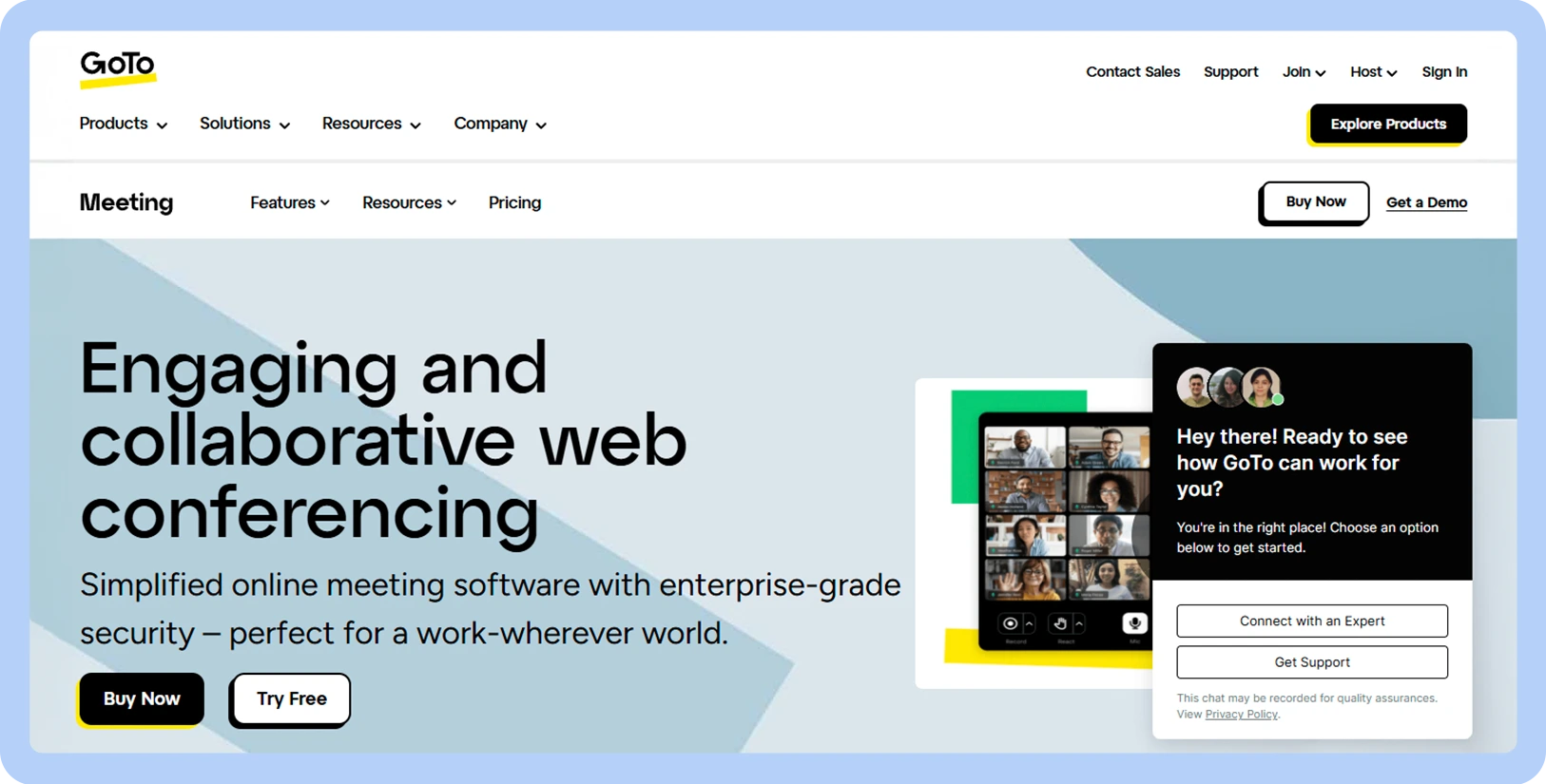

Basic video conferencing
Larger participant limits
Easily integrates with other tools
Robust security
Doesn’t have free plan, only a free 14-day trial
High learning curve
Enterprise-grade security
Provides meeting transcripts
Hosting unlimited, large-scale meetings for no extra charge
High-quality video and audio
Paid plans start at $12/month (supports up to 150 individuals)
Skype shutting down isn’t the end of something, but an opportunity to step up your telecom game — and now you have a list of replacements. But how are you supposed to start narrowing down contenders?
Keep these important features in mind so you can be certain you’re picking the best new video conferencing tool:
If you’re working with a smaller team (less than 25 people), you might be able to get away with free tools. Just think about your current team size, must-have features, and how much you’d like to scale when picking your favorite tool.
How valuable is it to host meetings with HD video and audio quality? If you’re speaking regularly with clients and want to put your best foot forward, it might be worth investing in a tool that specializes in quality video offerings and audio performance.
Skype alternatives with more bells and whistles like Microsoft Teams tend to be harder to learn how to use. Look for a platform that balances a robust feature set with an easy-to-use, intuitive interface.
Consider how important it is that your video conferencing tool connects with your pre-existing toolset. Tools like Microsoft Teams and Google Meet can give you more time back in your day, particularly when you’re already using the Microsoft or Google tool suite. Alternatively, solutions with strong integration capabilities like Zoom can give you that seamless experience you’re looking for.
Security is an important factor for any business, but especially for those with strict compliance rules. If you’re in an industry that requires your alternative to Skype to meet standards like HIPAA and GDPR, carefully review your options to make sure they meet your standards.
Think about how your team communicates and where they’re located. For an entirely remote team, collaboration features like an in-meeting chat box or co-editing capabilities might be more important than those who are hybrid or in-office.
How much is your team going to grow, and how much will those new seats cost you in the next three, four, five years? Think about how your new Skype business alternative is going to grow with you. Look for features like:
Carefully weigh cost versus value. Saving money may be a priority for most organizations, but penny-pinching can also hurt you in the long run if your chosen solution doesn’t have the features you need. Going with a paid plan or higher tier could pay off if it allows you to consolidate more tools on one platform or gives you the flexibility to scale as your business grows.
Hybrid, remote, and globally distributed teams are the norm in 2025. And that means you need the communication tools to match. You need a Skype competitor that supports video calls, messaging, and collaboration, all in one place.
Zoom Workplace can help bridge that gap. It is designed to build on your standard video meeting and messaging offerings with enhanced security, end-to-end encryption for meetings, improved 4K video quality, AI-first collaboration features, and much more, making it a modern Skype alternative.
Ready to see the difference? Get started with a free Zoom account today and learn why former Skype users have made the switch.